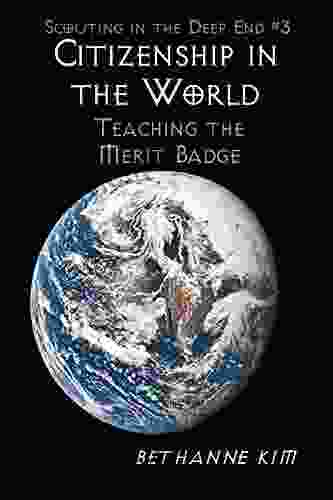The Nature and Chemistry of Romantic Love: A Deep Dive into the Science of Attraction

Romantic love is one of the most powerful emotions we can experience. It can make us feel alive, happy, and fulfilled. But what is romantic love, exactly? And how does it work?
In this article, we will explore the different aspects of romantic love, from its initial attraction to its long-term development. We will also discuss the role of hormones and neurotransmitters in romantic love, and how these chemicals can affect our thoughts, feelings, and behaviors.
4.5 out of 5
| Language | : | English |
| File size | : | 743 KB |
| Text-to-Speech | : | Enabled |
| Screen Reader | : | Supported |
| Enhanced typesetting | : | Enabled |
| X-Ray | : | Enabled |
| Word Wise | : | Enabled |
| Print length | : | 321 pages |
The Initial Attraction
The initial attraction to someone is often based on physical appearance. We are drawn to people who we find attractive, and this attraction is often based on our own personal preferences. However, there are also some evolutionary factors that can influence our initial attraction to someone.
For example, research has shown that we are more likely to be attracted to people who have similar facial features to our own. This is thought to be because we are subconsciously drawn to people who are genetically similar to us, which increases the chances of our offspring being healthy.
In addition to physical appearance, we are also attracted to people who we find interesting, intelligent, and funny. We are drawn to people who make us laugh, who share our interests, and who we can have meaningful conversations with.
The Development of Long-Term Love
The initial attraction to someone is just the first step in the development of long-term love. For love to last, it needs to be built on a foundation of trust, respect, and communication.
Trust is essential for any healthy relationship. We need to be able to trust that our partner will be there for us, even when things are tough. We need to be able to trust that our partner will be honest with us, and that they will not hurt us.
Respect is another important ingredient in long-term love. We need to respect our partner's opinions, even if we don't agree with them. We need to respect their boundaries, and we need to treat them with kindness and compassion.
Communication is essential for any healthy relationship. We need to be able to communicate our needs and desires to our partner, and we need to be able to listen to and understand their needs and desires. Communication is also important for resolving conflicts and for building a strong bond.
The Role of Hormones and Neurotransmitters
Hormones and neurotransmitters play a significant role in romantic love. These chemicals can affect our thoughts, feelings, and behaviors, and they can help to create the feelings of attraction, bonding, and attachment that are essential for long-term love.
One of the most important hormones involved in romantic love is oxytocin. Oxytocin is known as the "love hormone" because it is released during childbirth, breastfeeding, and orgasm. Oxytocin has been shown to increase feelings of bonding, attachment, and trust. It also plays a role in social bonding and in the formation of long-term relationships.
Another important hormone involved in romantic love is dopamine. Dopamine is known as the "reward hormone" because it is released when we experience something pleasurable. Dopamine is involved in the initial attraction to someone, and it also plays a role in the development of long-term love. Dopamine helps to create feelings of excitement, pleasure, and motivation.
In addition to hormones, neurotransmitters also play a role in romantic love. Neurotransmitters are chemicals that are released by neurons in the brain. They help to transmit signals between neurons, and they can affect our thoughts, feelings, and behaviors.
One of the most important neurotransmitters involved in romantic love is serotonin. Serotonin is known as the "feel-good" neurotransmitter because it is involved in feelings of happiness, well-being, and contentment. Serotonin is also involved in the development of long-term relationships. Serotonin helps to create feelings of calmness, security, and stability.
Another important neurotransmitter involved in romantic love is norepinephrine. Norepinephrine is known as the "fight-or-flight" neurotransmitter because it is released when we are faced with a threat. Norepinephrine can increase our heart rate, blood pressure, and breathing rate. It also helps to create feelings of excitement and arousal.
Romantic love is a complex and fascinating emotion. It is influenced by a variety of factors, including our personal preferences, our evolutionary history, and our hormones and neurotransmitters. Romantic love can be a source of great joy and fulfillment, but it can also be a source of pain and heartache.
If you are lucky enough to find someone to share your life with, cherish the relationship. Nurture it with love, care, and communication. And remember, the best relationships are built on a foundation of trust, respect, and mutual understanding.
4.5 out of 5
| Language | : | English |
| File size | : | 743 KB |
| Text-to-Speech | : | Enabled |
| Screen Reader | : | Supported |
| Enhanced typesetting | : | Enabled |
| X-Ray | : | Enabled |
| Word Wise | : | Enabled |
| Print length | : | 321 pages |
Do you want to contribute by writing guest posts on this blog?
Please contact us and send us a resume of previous articles that you have written.
 Fiction
Fiction Non Fiction
Non Fiction Romance
Romance Mystery
Mystery Thriller
Thriller SciFi
SciFi Fantasy
Fantasy Horror
Horror Biography
Biography Selfhelp
Selfhelp Business
Business History
History Classics
Classics Poetry
Poetry Childrens
Childrens Young Adult
Young Adult Educational
Educational Cooking
Cooking Travel
Travel Lifestyle
Lifestyle Spirituality
Spirituality Health
Health Fitness
Fitness Technology
Technology Science
Science Arts
Arts Crafts
Crafts DIY
DIY Gardening
Gardening Petcare
Petcare Kasie West
Kasie West Tom Patri
Tom Patri Cody Monk
Cody Monk Cathy Williams
Cathy Williams David Yoon
David Yoon Amy Mccready
Amy Mccready Kenneth P Stephens
Kenneth P Stephens Rick Deutsch
Rick Deutsch Thom Hartmann
Thom Hartmann Warren B Powell
Warren B Powell Michael Abayomi
Michael Abayomi Sarah Woodbury
Sarah Woodbury David Burch
David Burch Cynthia Gabriel
Cynthia Gabriel Leslie Sansone
Leslie Sansone Candy Verney
Candy Verney Tom Deck
Tom Deck Dolores Kong
Dolores Kong Jennifer S Kelly
Jennifer S Kelly James P Kelly
James P Kelly Claudia J Carr
Claudia J Carr Elizabeth S Gilbert
Elizabeth S Gilbert Julie Barlow
Julie Barlow Suzanne Stabile
Suzanne Stabile Alan Margot
Alan Margot Peter Worley
Peter Worley Kevin Stiegelmaier
Kevin Stiegelmaier Chris Irons
Chris Irons Wolf Moon
Wolf Moon Jonathan Bartlett
Jonathan Bartlett Shaun Gallagher
Shaun Gallagher The 60 Minutes Summary
The 60 Minutes Summary Torey L Hayden
Torey L Hayden Jean Christie Ashmore
Jean Christie Ashmore Don Bowers
Don Bowers Laini Taylor
Laini Taylor Tim Hornbaker
Tim Hornbaker Amara Charles
Amara Charles Peter Larson
Peter Larson Frederick Lenz
Frederick Lenz Steve Greenberg
Steve Greenberg Diane Greer
Diane Greer Reinhold Messner
Reinhold Messner Randy Schultz
Randy Schultz Sarah J Maas
Sarah J Maas Shannon O Bourne
Shannon O Bourne Dan Abnett
Dan Abnett Dr Scott A Johnson
Dr Scott A Johnson Kezia Endsley
Kezia Endsley Shere Hite
Shere Hite Karen Deerwester
Karen Deerwester Ananda Lowe
Ananda Lowe Tracy Lorraine
Tracy Lorraine Erika Napoletano
Erika Napoletano Bridget Ericsson
Bridget Ericsson June Cl Tan
June Cl Tan Autumn Jordon
Autumn Jordon Buck Tilton
Buck Tilton Therese A Rando
Therese A Rando Camille Glenn
Camille Glenn Nina Freudenberger
Nina Freudenberger Byron Nelson
Byron Nelson Deborah Vinall Psyd Lmft
Deborah Vinall Psyd Lmft John Lukacs
John Lukacs Anna B Doe
Anna B Doe Amy Bleuel
Amy Bleuel Kathleen M Stacy
Kathleen M Stacy Danny Dreyer
Danny Dreyer Jason Borte
Jason Borte C L Simchick
C L Simchick David Salsburg
David Salsburg Amy B Middleman
Amy B Middleman Lizabeth Hardman
Lizabeth Hardman Wendy Margolis
Wendy Margolis Melody Schreiber
Melody Schreiber Brian Pace
Brian Pace L Frank Baum
L Frank Baum Ruth Nestvold
Ruth Nestvold Benjamin Jelen
Benjamin Jelen Eric E Bowne
Eric E Bowne Sarah Morgan Haydock
Sarah Morgan Haydock Amber Smith
Amber Smith Nikala Smith
Nikala Smith Amy Camp
Amy Camp J Marin Younker
J Marin Younker J Stephen Jones
J Stephen Jones Amelia Parker
Amelia Parker David Guymer
David Guymer Kieron Gillen
Kieron Gillen Sterling Test Prep
Sterling Test Prep Erin Chack
Erin Chack Jan Marie Mueller
Jan Marie Mueller Gal Dem
Gal Dem Amy Perry
Amy Perry Kristine Kathryn Rusch
Kristine Kathryn Rusch Trevor Day
Trevor Day Brian Kateman
Brian Kateman Eric Tyndall
Eric Tyndall Trent Shelton
Trent Shelton Andy Hunt
Andy Hunt Amy Baldwin
Amy Baldwin Wade Rouse
Wade Rouse Joseph Mcmoneagle
Joseph Mcmoneagle Summer Michaud Skog
Summer Michaud Skog Tyler Simmons
Tyler Simmons Jack Freeman
Jack Freeman Mark Stallard
Mark Stallard C W Lockhart
C W Lockhart Joe Dan Lowry
Joe Dan Lowry Dom Amore
Dom Amore Richard Cohen
Richard Cohen Marshall Goldsmith
Marshall Goldsmith Lars Andersen
Lars Andersen Roman Gelperin
Roman Gelperin Christine Fanthome
Christine Fanthome Ken Chaddock
Ken Chaddock Deborah Lipsky
Deborah Lipsky Jack Tupp
Jack Tupp Ronda Rousey
Ronda Rousey David Elkington
David Elkington John Maxwell Wood
John Maxwell Wood William Rosen
William Rosen Kris Leonard
Kris Leonard Devin Olsen
Devin Olsen Joseph Wayne Smith
Joseph Wayne Smith Amber Zygutis
Amber Zygutis Stephenie Meyer
Stephenie Meyer Laura Slinn
Laura Slinn Amy Bizzarri
Amy Bizzarri Courtney Defeo
Courtney Defeo Larry K Brendtro
Larry K Brendtro Dr Elizabeth Cherevaty Nd Rac
Dr Elizabeth Cherevaty Nd Rac Jim Santos
Jim Santos Charles Thompson
Charles Thompson Paul Kaplowitz
Paul Kaplowitz Guillaume Haeringer
Guillaume Haeringer Tijan
Tijan Brian Klaas
Brian Klaas Joan Freeman
Joan Freeman Amy Blakeslee
Amy Blakeslee Jd Mader
Jd Mader J L Weil
J L Weil Harley Reid
Harley Reid Michaela Riva Gaaserud
Michaela Riva Gaaserud Patricia L Papernow
Patricia L Papernow Charles Hall
Charles Hall Tom Colicchio
Tom Colicchio Dr Bob Rotella
Dr Bob Rotella Sheena Johnstone
Sheena Johnstone David Ranney
David Ranney Joseph Howse
Joseph Howse Mark W T Harvey
Mark W T Harvey Krystal Sutherland
Krystal Sutherland Amir Alexander
Amir Alexander Pav Bryan
Pav Bryan Topher Donahue
Topher Donahue American Baseball Coaches Association
American Baseball Coaches Association Amie Kaufman
Amie Kaufman Kate Parham Kordsmeier
Kate Parham Kordsmeier Erica T Lehrer
Erica T Lehrer Isabella Krystynek
Isabella Krystynek Laekan Zea Kemp
Laekan Zea Kemp Michael Winkelman
Michael Winkelman Charles J Alsheimer
Charles J Alsheimer Ignatius Donnelly
Ignatius Donnelly Vivian Vande Velde
Vivian Vande Velde Tanya Turner
Tanya Turner Jack Nisbet
Jack Nisbet Nicholas A Christakis
Nicholas A Christakis Gail Maccoll
Gail Maccoll A Sorority Of Mothers
A Sorority Of Mothers Marina Robb
Marina Robb Louise Bates Ames
Louise Bates Ames Katherine Kurtz
Katherine Kurtz Elizabeth Lim
Elizabeth Lim Alan I Marcus
Alan I Marcus Cordelia K Castel
Cordelia K Castel Mark Worden
Mark Worden Anthony Haynes
Anthony Haynes Jan E Stets
Jan E Stets Eugenia Viti
Eugenia Viti Laurie A Watkins
Laurie A Watkins Derrick Jensen
Derrick Jensen Jayson Gaddis
Jayson Gaddis Neville Goddard
Neville Goddard Erik Qualman
Erik Qualman Tamora Pierce
Tamora Pierce Deborah J Rumsey
Deborah J Rumsey Toni Tone
Toni Tone Zeshan Qureshi
Zeshan Qureshi Jennifer Margulis
Jennifer Margulis Kathleen Glasgow
Kathleen Glasgow Tim Marshall
Tim Marshall Chad Ford
Chad Ford William Glasser M D
William Glasser M D Steven C Hayes
Steven C Hayes Amber Lia
Amber Lia Sue Monk Kidd
Sue Monk Kidd James W Williams
James W Williams John A Buehrens
John A Buehrens John L Field
John L Field Amy Adele Hasinoff
Amy Adele Hasinoff Jon Bonnell
Jon Bonnell Muhammad Vandestra
Muhammad Vandestra Janet Engle
Janet Engle Dmv Test Bank
Dmv Test Bank Liz Fosslien
Liz Fosslien Sandra Luna Mccune
Sandra Luna Mccune Kathy Spratt
Kathy Spratt Marco Ferrero
Marco Ferrero Jameson M Wetmore
Jameson M Wetmore Randall E Schumacker
Randall E Schumacker Antonio R Damasio
Antonio R Damasio Brittany Clair
Brittany Clair Robb Walsh
Robb Walsh Bill Carter
Bill Carter Redmond O Hanlon
Redmond O Hanlon Malba Tahan
Malba Tahan Josiah Hesse
Josiah Hesse Rachel Gurevich
Rachel Gurevich Amante P Marinas
Amante P Marinas Joel Cotton
Joel Cotton Elise Christie
Elise Christie Julie Caplin
Julie Caplin Chris Carlsson
Chris Carlsson Thomas J Whalen
Thomas J Whalen Tavi Gevinson
Tavi Gevinson Ned Seaton
Ned Seaton American Psychological Association
American Psychological Association Susanna Heli
Susanna Heli William Stillman
William Stillman Norman Doidge
Norman Doidge David Grinspoon
David Grinspoon Helena P Blavasky
Helena P Blavasky Clotaire Rapaille
Clotaire Rapaille Md Rezowan Ahmed
Md Rezowan Ahmed Sheri Van Dijk
Sheri Van Dijk Art Star
Art Star Jeffrey Steadman
Jeffrey Steadman K F Breene
K F Breene Dave Hanson
Dave Hanson Chloe Gong
Chloe Gong Paul Oliver
Paul Oliver Spike Dykes
Spike Dykes Lisa Zimmer Hatch
Lisa Zimmer Hatch Julie Schacht Sway
Julie Schacht Sway Amelia Freer
Amelia Freer Tabitha Suzuma
Tabitha Suzuma William Bohan
William Bohan Jean Van T Hul
Jean Van T Hul Bethanne Kim
Bethanne Kim Catherine Dees
Catherine Dees Jacob Bronowski
Jacob Bronowski Alexandrea Weis
Alexandrea Weis Helen E Fisher
Helen E Fisher Joseph Klaits
Joseph Klaits Michael Cosgrove
Michael Cosgrove Amrita Pande
Amrita Pande Theresa Y Wee M D
Theresa Y Wee M D Don Stradley
Don Stradley John Bingham
John Bingham Amiee Mueller
Amiee Mueller Timothy Malcolm
Timothy Malcolm Joe Dante
Joe Dante Doug Peterson
Doug Peterson Oscar Baechler
Oscar Baechler Theresa I Soto
Theresa I Soto Joe E Harvey
Joe E Harvey Gary Wiener
Gary Wiener Ashley Scott
Ashley Scott Mitt Romney
Mitt Romney Johan Norberg
Johan Norberg Jenny Landreth
Jenny Landreth Carlo Buzzichelli
Carlo Buzzichelli Jenni Hicks
Jenni Hicks Gerald Corey
Gerald Corey Arlene Blum
Arlene Blum Iain Pardoe
Iain Pardoe George Bernard Shaw
George Bernard Shaw Paul Wieland
Paul Wieland Joseph Conrad
Joseph Conrad Nathan Belofsky
Nathan Belofsky Eugene C Toy
Eugene C Toy Amit Saha
Amit Saha Chad Starkey
Chad Starkey Nisha Garg
Nisha Garg Nick Kolenda
Nick Kolenda Rosalind Wiseman
Rosalind Wiseman Jessica Cunsolo
Jessica Cunsolo Naomi Oreskes
Naomi Oreskes Peter Hayes
Peter Hayes Jason Thompson
Jason Thompson Ruta Nonacs
Ruta Nonacs Philippa Langley
Philippa Langley Ray Mancini
Ray Mancini Marisa Anne Bass
Marisa Anne Bass Stanley I Greenspan
Stanley I Greenspan Amber Lee Sellers
Amber Lee Sellers Amira Mikhail
Amira Mikhail Kresley Cole
Kresley Cole Jack Falla
Jack Falla American Math Academy
American Math Academy Alex Polyakov
Alex Polyakov Mike Adamick
Mike Adamick Amie Lands
Amie Lands Grant Dever
Grant Dever Md Mahady Hasan
Md Mahady Hasan Rodney M Howard Browne
Rodney M Howard Browne Cole Hersowitz
Cole Hersowitz Ruth M Tappen
Ruth M Tappen Richard Wagamese
Richard Wagamese John Ferrell
John Ferrell Martin Williams
Martin Williams Jonathon Miller Weisberger
Jonathon Miller Weisberger Robyn Davidson
Robyn Davidson Amber Foster
Amber Foster Clancy Cavnar
Clancy Cavnar Christopher Cousteau
Christopher Cousteau Christopher E Larsen
Christopher E Larsen Cookie O Gorman
Cookie O Gorman Swede Burns
Swede Burns P Aarne Vesilind
P Aarne Vesilind Mark Taylor
Mark Taylor Amelia Edith Huddleston Barr
Amelia Edith Huddleston Barr Stephen M Barr
Stephen M Barr Amy Brown
Amy Brown Henry A Zumbrun 2
Henry A Zumbrun 2 William G Dever
William G Dever Kathy A Zahler
Kathy A Zahler Jocelyn Goodwin
Jocelyn Goodwin Kyle Hunt
Kyle Hunt Craig Larman
Craig Larman Dima Zales
Dima Zales Gia Giasullo
Gia Giasullo Mac Fortner
Mac Fortner Meikang Qiu
Meikang Qiu Anthony Horowitz
Anthony Horowitz Robert A Weinberg
Robert A Weinberg Joellen Patterson
Joellen Patterson Candida Lawrence
Candida Lawrence Rose Mannering
Rose Mannering Sharon K Zumbrunn
Sharon K Zumbrunn Stephen Walker
Stephen Walker John Mcpherson
John Mcpherson Nicholeen Peck
Nicholeen Peck Kumo Kagyu
Kumo Kagyu Shanna Cunning
Shanna Cunning Derek Thompson
Derek Thompson Ana And Jack Hicks
Ana And Jack Hicks Howard J Meditz
Howard J Meditz Mark Turley
Mark Turley Ned Vizzini
Ned Vizzini Cheri Rae
Cheri Rae Lisa Maloney
Lisa Maloney Matthew L Martin
Matthew L Martin Joe Nickell
Joe Nickell Theodore Sider
Theodore Sider Kate Fox
Kate Fox Silvia Botros
Silvia Botros K M Shea
K M Shea Donovan Hohn
Donovan Hohn Temple Grandin
Temple Grandin Jeff Gaudette
Jeff Gaudette Nikhil Bhardwaj
Nikhil Bhardwaj Amber O Neal Johnston
Amber O Neal Johnston Don Mann
Don Mann Adam Cort
Adam Cort Stephen J Collier
Stephen J Collier Stephen Goodwin
Stephen Goodwin Umer W
Umer W Pinky Mckay
Pinky Mckay Vince Kotchian
Vince Kotchian Ellie Wood
Ellie Wood Robert W D Ball
Robert W D Ball Paul Dickson
Paul Dickson Ryan Gray
Ryan Gray Maria Youtman
Maria Youtman Rich Rousseau
Rich Rousseau Bruce Dowbiggin
Bruce Dowbiggin Victor J Stenger
Victor J Stenger Eric T Knight
Eric T Knight Jean Rose
Jean Rose Heidi J Larson
Heidi J Larson Vicki Hearne
Vicki Hearne Andrey Ryanskiy
Andrey Ryanskiy Steven Charleston
Steven Charleston Paul Schwartz
Paul Schwartz Sarah Sumbal
Sarah Sumbal Jeff Martone
Jeff Martone Glenn Stout
Glenn Stout Alex Stone
Alex Stone Michael R Poll
Michael R Poll James E Packer
James E Packer Dana Obleman
Dana Obleman Sandra Bardwell
Sandra Bardwell Vinod Kumar Khanna
Vinod Kumar Khanna Josephine Atluri
Josephine Atluri Amby Cooper
Amby Cooper Josh Taylor
Josh Taylor Fred Pyrczak
Fred Pyrczak Paul Graham
Paul Graham Paul Kockelman
Paul Kockelman Andy Singleton
Andy Singleton James Mullaney
James Mullaney Hadley Wickham
Hadley Wickham Saleh Alkhalifa
Saleh Alkhalifa Joseph P Weir
Joseph P Weir Jack Ewing
Jack Ewing Heather Macfadyen
Heather Macfadyen Victoria Wood
Victoria Wood Brendan Leonard
Brendan Leonard Michael Parker Pearson
Michael Parker Pearson Frank Nappi
Frank Nappi Terry Wieland
Terry Wieland Emma Mae Jenkins
Emma Mae Jenkins Lady Antiva
Lady Antiva Stephen Barr
Stephen Barr Traci Gormley
Traci Gormley Jessica Hatcher Moore
Jessica Hatcher Moore Sonia Hartl
Sonia Hartl Anne Chambers
Anne Chambers Jeanne Ryan
Jeanne Ryan Susan White
Susan White Philip Gibson
Philip Gibson Jack Weatherford
Jack Weatherford Patrick O Sullivan
Patrick O Sullivan Stanley J Farlow
Stanley J Farlow Douglas Wilson
Douglas Wilson Pamela Lynn
Pamela LynnK D
 Rob Fisher
Rob Fisher Julie Mosier
Julie Mosier Jeremy J Baumberg
Jeremy J Baumberg Donna Williams
Donna Williams Tahlia Kirk
Tahlia Kirk Jerry D Moore
Jerry D Moore Mariano Anaya
Mariano Anaya Denise Ni
Denise Ni Victoria Richards
Victoria Richards Dan Schlossberg
Dan Schlossberg Gina Chen
Gina Chen Sarah Dessen
Sarah Dessen Garrett M Fitzmaurice
Garrett M Fitzmaurice Andy Couturier
Andy Couturier Django Paris
Django Paris Sian Warriner
Sian Warriner John Jacobs
John Jacobs Holly Herrick
Holly Herrick Martin Pollizotto
Martin Pollizotto Christina Kamp
Christina Kamp Don Orwell
Don Orwell Catherine Ryan Gregory
Catherine Ryan Gregory Michael Reichert
Michael Reichert Rosanna Davison
Rosanna Davison Desi Northup
Desi Northup Edward J Denecke
Edward J Denecke E T Bryant
E T Bryant Jake Maddox
Jake Maddox Sean Gibson
Sean Gibson Rob Antoun
Rob Antoun Sean Go
Sean Go Jonathan Law
Jonathan Law Angela Moore
Angela Moore Valerie Bass
Valerie Bass Eric Zweig
Eric Zweig Michelle Newhart
Michelle Newhart Michael Ondaatje
Michael Ondaatje Marit Weisenberg
Marit Weisenberg Test Masters
Test Masters Shalabh Aggarwal
Shalabh Aggarwal Rick Stanton
Rick Stanton H Bedford Jones
H Bedford Jones Tom Taulli
Tom Taulli Christopher Harlan
Christopher Harlan Pico Iyer
Pico Iyer Kate Tietje
Kate Tietje Matthew Lombardi
Matthew Lombardi Sandra T Barnes
Sandra T Barnes Robert Melillo
Robert Melillo
Light bulbAdvertise smarter! Our strategic ad space ensures maximum exposure. Reserve your spot today!
 Federico García LorcaFollow ·19.8k
Federico García LorcaFollow ·19.8k Wayne CarterFollow ·8.8k
Wayne CarterFollow ·8.8k Branson CarterFollow ·12.2k
Branson CarterFollow ·12.2k Vince HayesFollow ·10.5k
Vince HayesFollow ·10.5k Marvin HayesFollow ·4.5k
Marvin HayesFollow ·4.5k Cody RussellFollow ·8.9k
Cody RussellFollow ·8.9k Evan HayesFollow ·5.9k
Evan HayesFollow ·5.9k Sidney CoxFollow ·13.9k
Sidney CoxFollow ·13.9k

 Ira Cox
Ira CoxUnveiling the Hidden Gem: Moon, Virginia - A Washington...
Nestled within the picturesque...

 Jorge Luis Borges
Jorge Luis BorgesThe Ultimate Survivalist's Medical Guide: A Comprehensive...
In the realm of...

 Henry Green
Henry GreenDavid Douglas: Exploring the Natural History of the...
David Douglas was a...

 Eric Hayes
Eric HayesUnderstanding Citizenship in a Globalized World: A...
Citizenship is a complex and multifaceted...

 Will Ward
Will WardUnveiling Research Real Talk: Navigating the Labyrinth of...
Research, the...
4.5 out of 5
| Language | : | English |
| File size | : | 743 KB |
| Text-to-Speech | : | Enabled |
| Screen Reader | : | Supported |
| Enhanced typesetting | : | Enabled |
| X-Ray | : | Enabled |
| Word Wise | : | Enabled |
| Print length | : | 321 pages |














